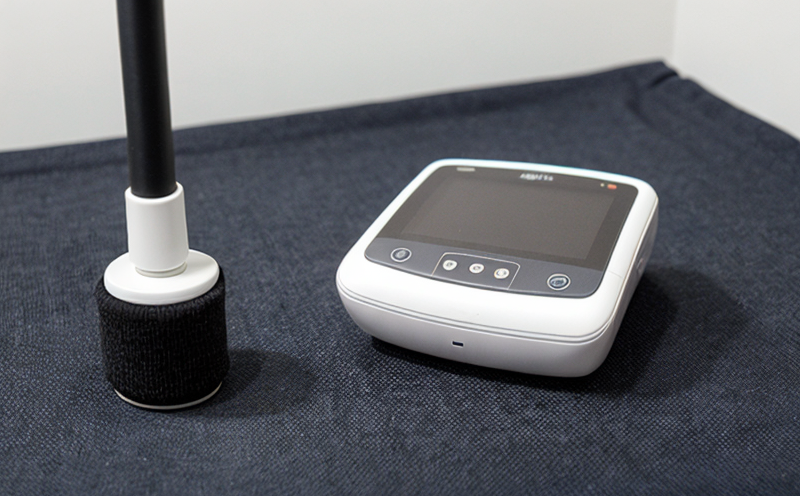JIS L1099 Water vapour transmission of multilayer smart fabrics
The JIS L1099 standard is a critical tool in the evaluation of water vapor transmission (WVT) properties for multi-layered smart textiles. These materials are designed to provide enhanced performance and comfort, often used in sectors like healthcare, automotive, and sports apparel where moisture management plays a pivotal role.
Water vapor transmission testing evaluates how effectively a fabric barrier allows or restricts the passage of water vapor through it. This is particularly important for smart textiles that incorporate advanced materials such as coatings, films, or other barriers within their structure. Understanding WVT helps manufacturers ensure products meet specific comfort and performance requirements in various environmental conditions.
The test involves placing a specimen between two chambers. One chamber contains dry air under controlled pressure, while the other is exposed to humidified air at a constant temperature. The difference in humidity between these two sides creates a driving force for water vapor to pass through the fabric. Over time, this differential drives the migration of water vapor, which can be quantified and reported as the water vapor transmission rate.
Testing according to JIS L1099 requires precise control over environmental parameters such as temperature, relative humidity, and pressure. It also necessitates careful preparation of the specimen, including conditioning it under specific conditions before testing to ensure accurate results. The test duration can vary based on the desired accuracy level but often ranges from several hours to days.
The outcome of this testing provides valuable insights into how a fabric behaves in different environmental conditions. For instance, healthcare garments need high WVT values for patient comfort and hygiene, while outdoor sports apparel should have lower values to prevent water ingress. The test results are typically reported as grams per square meter per day (g/m²·d), which allows for easy comparison between different materials.
Understanding the methodology behind JIS L1099 also aids in interpreting these results correctly, ensuring that they align with broader product development goals and regulatory standards. This knowledge is essential for quality managers, compliance officers, R&D engineers, and procurement teams who need to ensure their products meet both performance expectations and industry benchmarks.
Why It Matters
The importance of JIS L1099 testing cannot be overstated for industries relying on smart textiles that incorporate advanced materials like coatings, films, or other barriers. For instance, in the healthcare sector, maintaining optimal moisture levels is crucial to patient comfort and hygiene. In automotive interiors, managing water vapor can enhance occupant safety by preventing condensation. Similarly, in outdoor sports apparel, minimizing water ingress while allowing for proper ventilation is essential for performance.
Accurate JIS L1099 testing ensures that these materials meet stringent quality control standards, which translates into products that are both functional and reliable. This, in turn, builds trust with consumers who rely on these textiles for their daily needs or activities. Compliance with such tests also helps manufacturers navigate regulatory requirements more effectively, ensuring they stay ahead of industry trends.
In summary, JIS L1099 testing is not just a technical procedure; it represents the backbone of product quality and customer satisfaction in sectors where smart textiles play a significant role. By adhering to this standard, companies can ensure their products perform as expected under various conditions, thereby enhancing overall user experience.
Industry Applications
JIS L1099 testing finds wide application across diverse industries:
- Healthcare: Ensuring garments provide optimal moisture management for patient comfort and hygiene.
- Automotive: Enhancing interior materials to prevent condensation, thereby improving occupant safety.
- Sports Apparel: Designing products that offer superior water vapor transmission properties to enhance performance during physical activities.
| Industry Sector | Application Area | Key Considerations |
|---|---|---|
| Healthcare | Gowns, Masks, Gowns & Masks | Comfort, Hygiene, Moisture Management |
| Automotive | Interior Materials | Condensation Control, Safety |
| Sports Apparel | Gloves, Shoes, Clothing | Ventilation, Performance, Comfort |
International Acceptance and Recognition
The JIS L1099 standard is widely recognized internationally for its stringent requirements on water vapor transmission testing of multi-layered smart fabrics. Its acceptance in various countries reflects the global importance placed on materials that effectively manage moisture, ensuring high-quality performance across different sectors.
Compliance with JIS L1099 not only meets local and international standards but also enhances a company’s reputation for quality. This recognition opens up opportunities for export to markets where stringent regulations are in place. Additionally, it ensures that products meet the expectations of discerning customers who value reliability and performance.
In conclusion, JIS L1099 testing is not just a local requirement; it is a global benchmark for ensuring the highest standards of moisture management in smart textiles. By adhering to this standard, companies can confidently offer products that meet international quality benchmarks and regulatory requirements.





